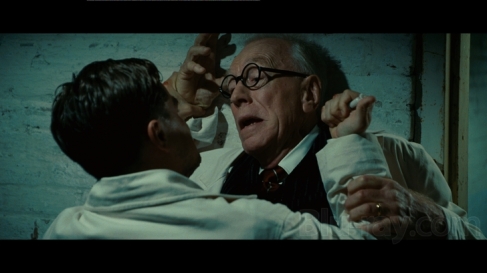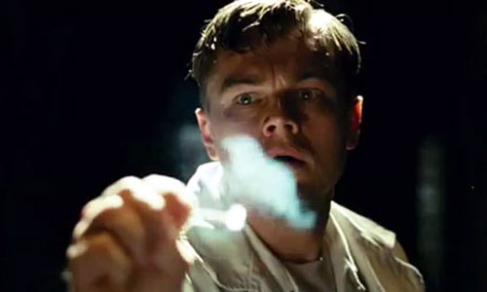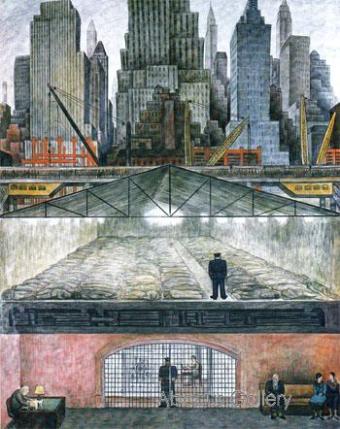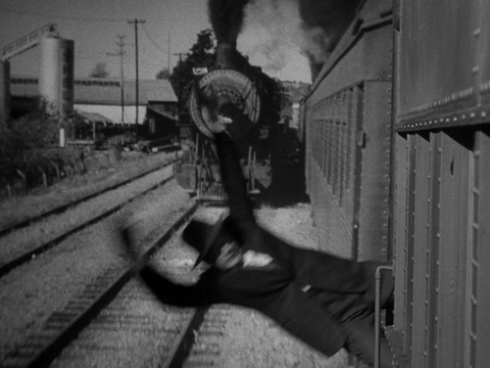In his novel, The Unbearable Lightness of Being, Milan Kundera writes, “Our dreams prove that to imagine – to dream about things that have not happened – is among mankind’s deepest needs.” (59). A defining feature of films noir, Marin Scorsese plays with this notion of dreams and the oneiric in Shutter Island in twofold ways: 1) in Teddy Daniels’ (or Andrew Laeddis; I will stick with Teddy for the sake of continuity) sleeping dreams and 2) in Teddy’s waking delusions. Similarly to other postmodern noirs that provoke a certain self-reflexivity and active participation in their audiences i.e. Fargo and humor and Memento and memory, Shutter Island forces its audience to ignore the underlying truth and see its world through Teddy’s delusions.
One way Scorsese engages with the concept of dreams is in the form Teddy Daniel’s sleeping dreams. Freudianism is another defining characteristic of films noir and Scorsese unabashedly makes reference to this. The character Dr. Jeremiah Naehring is an obvious allusion to Freud with his hard German accent, round glasses, and propensity to wax psychological by talking about things such as “defense mechanisms.” Furthermore, Dr. Naehring provides his own riff of dream interpretation as he is pinned against the wall by Teddy: “Did you know that the word ‘trauma’ comes from the Greek for ‘wound’? Hm? And what is the German word for ‘dream’? Traum. Ein Traum. Wounds can create monsters, and you, you are wounded, Marshal.” As a Freudian mouthpiece, Dr. Naerhing draws our attention to Teddy’s dreams that elucidate his “wounds.”
Teddy often dreams about the Dachau concentration camp melded with dreams about his wife, his daughter, fire, and water. Eventually, we learn that these dreams are manifestations of Teddy’s repressed past in which his denial of his wife’s festering insanity lead resulted in her drowning their three children and his subsequent murder of her – the reason why Teddy is in Ashecliffe mental hospital. This latent truth is reflected by his wife’s perpetual appearance as wet and her warnings against Laeddis. She is ultimately the symbol of his repression.
Teddy also sees his wife and daughter in his waking delusions or hallucinations. He essentially imagines a reality to remove himself from his trauma, reverberating what Kundera calls one of “mankind’s greatest needs.” In an analysis of Shutter Island, Vic Holtreman of Screenrant.com points out that “Fire is a symbol of Andrew/Teddy’s insanity.” To add to that statement, Teddy has issues with light in general; the symbolism of light as representing truth is all too obvious. Teddy is blinded by light at one point and images of his wife are constantly juxtaposed with fire. For instance, as Teddy speaks with George Noyce he lights match after match while George is blatantly telling him the truth about the grand role-playing game by saying, “This is a game. All of this is for you. You’re not investigating anything. You’re a fucking rat in a maze. “ Still, he construes this information to be congruent with his fantasy and hallucinates seeing and hearing his wife. Furthermore, he sees his wife and daughter as the car explodes and fire envelops the two, though they appear unscathed.
In conclusion, whereas Christopher Nolan manipulates his audience’s memory by complicating the narrative structure of Memento, Martin Scorsese uses dreams and delusions to force his audience into the same confusion as Teddy Daniels in Shutter Island. While watching the film we carry the same dubiousness about the motivations of Ashcecliffe and its staff as Teddy does. However, the certainty of the film’s conclusion separates Shutter Island from other postmodern noirs like Fargo and Memento.



















